#science
Text

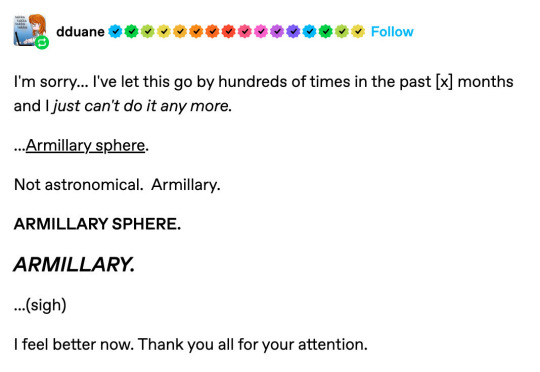
**For the people asking I found the ring HERE
#funny#lol#haha#humor#meme#memes#art#design#artists on tumblr#tweet#aesthetic#twitter#vintage#dark academia#light academia#photography#creative#creativity#fantasy#science
2K notes
·
View notes
Text

Regulus, Lion's Heart
84 notes
·
View notes
Text
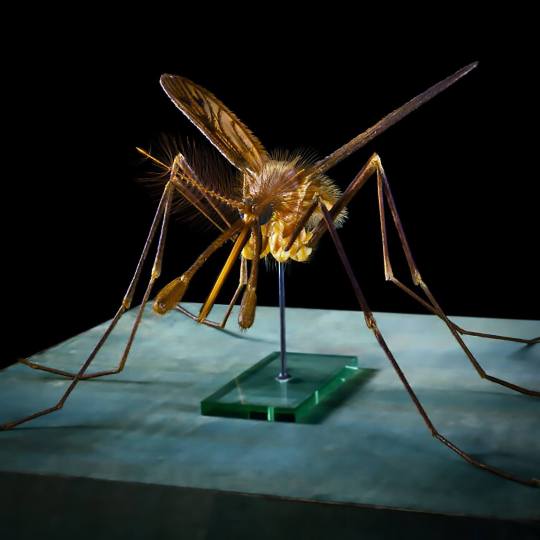
Have you ever noticed this gigantic mosquito at the Museum?
This isn’t a specimen of some monstrously-sized insect, but instead a scaled-up model of the tiny Anopheles maculipennis. This mosquito model is enlarged 47 times and debuted at the Museum in 1917 as part of an effort to educate the public about mosquito-borne illnesses like malaria and yellow fever.
Of the more than 3,500 species of mosquito known to science, the Anopheles mosquito is among a small handful responsible for malaria transmission in humans. While only females bite and transmit disease to humans, this model is a male.
At the time, it was a somewhat controversial idea that the mosquito, not poor sanitation, spread malaria. Since the model’s unveiling at the Museum, huge advances have been made in the global effort to combat and treat malaria as well as to educate the public about the disease.
Photo: © AMNH
121 notes
·
View notes
Text

Odda, Norway 🇳🇴
140 notes
·
View notes
Text
What if there was plastic-like material that could absorb excess nutrients from water and be used as a fertilizer when it decomposes? That product—a "bioplastic" material—has been created by University of Saskatchewan (USask) chemistry professor Dr. Lee Wilson and his research team, as detailed in a paper recently published in RSC Sustainability. The research team includes Ph.D. candidate Bernd G. K. Steiger, BSc student Nam Bui and postdoctoral fellow trainee Bolanle M. Babalola.
"We've made a bioplastic material that functions as an absorbent and it takes phosphate out of water, where elevated levels of phosphate in surface water is a huge global water security issue," he said. "You can harvest those pellets and distribute them as an agricultural fertilizer."
Continue Reading.
87 notes
·
View notes
Text
Deep-sea ASMR brought to you by a robot unspooling a cable. 〰️
MBARI's underwater hydrophone sits on the seafloor about 30 kilometers (18 miles) from shore, just west of Monterey Bay. It is attached (by this neat neon cable) to the MARS undersea cabled observatory, which carries data from the hydrophone back to shore.
Although the MARS hydrophone is located on the deep seafloor, most of the sounds it picks up are from animals and activities higher up in the water or even at the sea surface. For example, it is common for the hydrophone to pick up the calls of sea lions, dolphins, and other near-surface animals, as well as the sounds of rain, waves, and wind blowing over the sea surface.
Interested in listening to the ocean soundscape? Anyone can eavesdrop on sounds in the deep sea via a continuous audio stream that carries live sound from 900 meters (3,000 feet) below the surface of Monterey Bay. Start your auditory adventure here.
77 notes
·
View notes
Text
Floofy red-head Grumpilump ❤️
Maybe my favorite color morph for Hamataliwa grisea, which are usually more of a uniform brown-ish grey.



#nature#animals#photography#bugblr#science#invertebrates#spiders#emotionalsupportspood#Hamataliwa#Lynx#invertefest
49 notes
·
View notes
Text
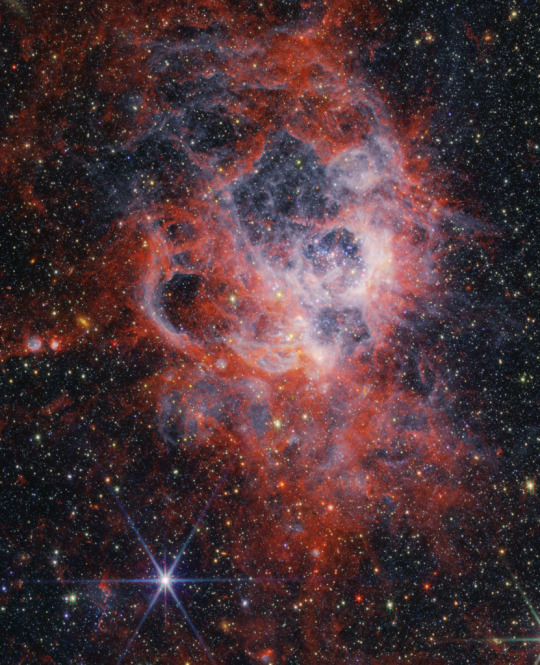
NGC 604, Star Nursery
321 notes
·
View notes
Text
Why Inkjet Paper Curls
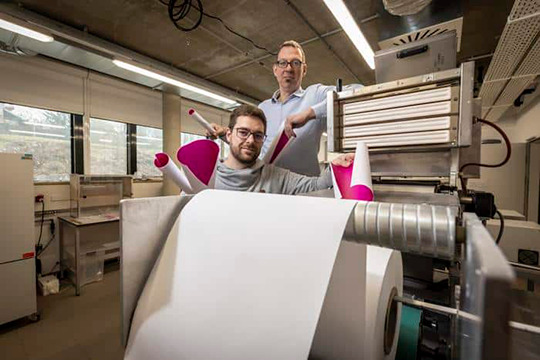
Printed pages from inkjet printers tends to curl up over time. Researchers found that this long-term curl correlates with the migration of glycerol -- one of the solvents used in inkjet ink -- through the paper's fiber layers toward the unprinted side. (Image credit: Lunghammer - TU Graz; research credit: A. Maass and U. Hirn; via Physics World)
Read the full article
59 notes
·
View notes
Text
In 1931, the Austrian logician Kurt Gödel pulled off arguably one of the most stunning intellectual achievements in history.
Mathematicians of the era sought a solid foundation for mathematics: a set of basic mathematical facts, or axioms, that was both consistent — never leading to contradictions — and complete, serving as the building blocks of all mathematical truths.
But Gödel’s shocking incompleteness theorems, published when he was just 25, crushed that dream. He proved that any set of axioms you could posit as a possible foundation for math will inevitably be incomplete; there will always be true facts about numbers that cannot be proved by those axioms. He also showed that no candidate set of axioms can ever prove its own consistency.
His incompleteness theorems meant there can be no mathematical theory of everything, no unification of what’s provable and what’s true. What mathematicians can prove depends on their starting assumptions, not on any fundamental ground truth from which all answers spring.
Natalie Wolchover, How Gödel’s Proof Works, Quanta Magazine, July 14, 2020
#quote#mathematics#science#Kurt Godel#Kurt Gödel#Godel#Gödel#proof#truth#incompleteness theorem#theorem#Gödel's Incompleteness Theorems#Godel's Incompleteness Theorems#math#mathematician#logic#knowledge#ignorance#theory of everything
36 notes
·
View notes
Text
It's the most fundamental of processes—the evaporation of water from the surfaces of oceans and lakes, the burning off of fog in the morning sun, and the drying of briny ponds that leaves solid salt behind. Evaporation is all around us, and humans have been observing it and making use of it for as long as we have existed.
And yet, it turns out, we've been missing a major part of the picture all along.
In a series of painstakingly precise experiments, a team of researchers at MIT has demonstrated that heat isn't alone in causing water to evaporate. Light, striking the water's surface where air and water meet, can break water molecules away and float them into the air, causing evaporation in the absence of any source of heat.
The astonishing new discovery could have a wide range of significant implications. It could help explain mysterious measurements over the years of how sunlight affects clouds, and therefore affect calculations of the effects of climate change on cloud cover and precipitation. It could also lead to new ways of designing industrial processes such as solar-powered desalination or drying of materials.
Continue Reading.
76 notes
·
View notes
Text

#information#learning#fyi#history#nature#science#the more you know#inspirational#beautiful#natural#sympathy#empathy#caring#love#loving#wisdom
24 notes
·
View notes
Text
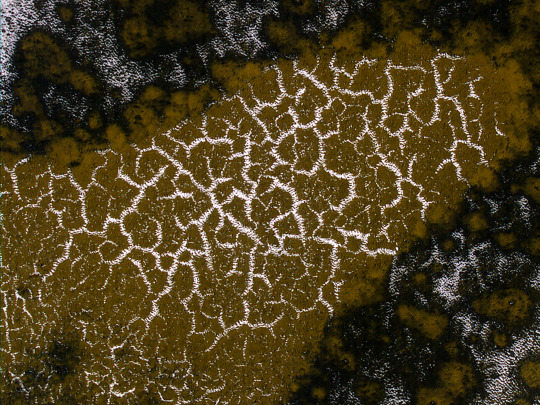
HiPOD: Defrosting Dunes
This image shows a field a sand dunes in the Martian springtime while the seasonal carbon dioxide frost is sublimating into the air. This sublimation process is not at all uniform, instead creating a pattern of dark spots.
In addition, the inter-dune areas are also striking, with bright frost persisting in the troughs of polygons. Our enhanced-color cutout is centered on a brownish-colored inter-dune area. (Enhanced color cutout is less than 1 km across.)
ID: ESP_082672_1180
date: 16 March 2024
altitude: 252 km
NASA/JPL-Caltech/UArizona
33 notes
·
View notes
Text
While 3D printing has exploded in popularity, many of the plastic materials these printers use to create objects cannot be easily recycled. While new sustainable materials are emerging for use in 3D printing, they remain difficult to adopt because 3D printer settings need to be adjusted for each material, a process generally done by hand.
To print a new material from scratch, one must typically set up to 100 parameters in software that controls how the printer will extrude the material as it fabricates an object. Commonly used materials, like mass-manufactured polymers, have established sets of parameters that were perfected through tedious, trial-and-error processes.
But the properties of renewable and recyclable materials can fluctuate widely based on their composition, so fixed parameter sets are nearly impossible to create. In this case, users must come up with all these parameters by hand.
Read more.
16 notes
·
View notes
Text

#astronomy#nasa#astronomers#universe#astrophotography#nasa photos#astrophysics#outer space#nasawebb#hubble space telescope#deep sky#sky#the universe#cosmos#galaxies#galaxy#planetary science#planetary nebula#nebula#space travel#international space station#space science#space exploration#space#science facts#science quotes#science#outer solar system#solar system
21 notes
·
View notes
Text

Figure 5: Previous figure copied on top of itself. It goes on like this in both directions forever. m′,m′′,m′′′ are (time-like worldlines of) observers “equivalent with” the observer m living on t̄. (Németi, István et al. “Visualizing ideas about Gödel-type rotating universes.” (2009))
17 notes
·
View notes